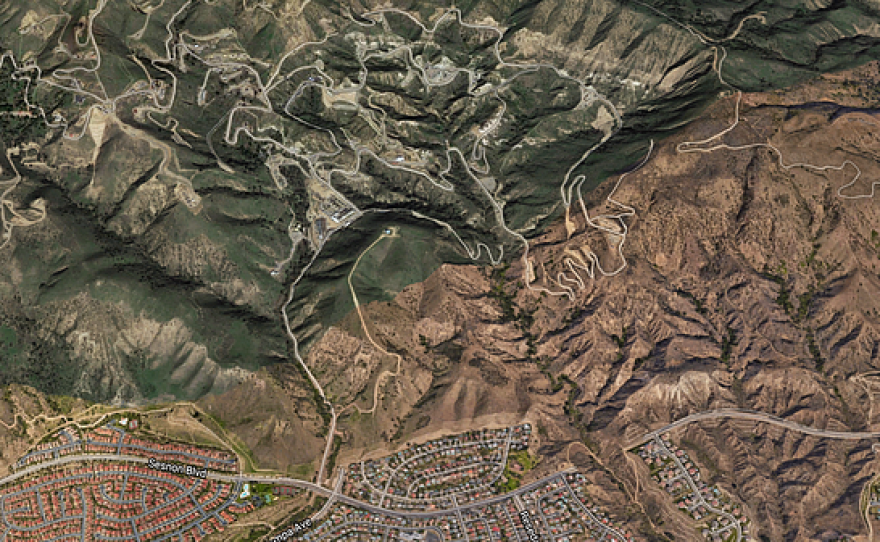A controversial practice in use on the day that a gas well catastrophically failed in Los Angeles County has been banned in the Aliso Canyon natural gas storage field, but permitted to continue elsewhere by the California Division of Oil, Gas and Geothermal Resources.
The cause of that disaster has not been determined. But on the day in October when the 63-year-old well broke, Southern California Gas Co. was injecting it under pressure through both its 2⅞-inch metal tubing and its 7-inch casing, inewsource reported Jan. 19. It had done so every day that month, 24 days, state records show. The practice is considered risky by some experts and is not allowed in Texas, said Ramona Nye of the Texas Railroad Commission, the industry regulator.
Don Drysdale of the California Division of Oil, Gas and Geothermal Resources said the era of such practice is over at Aliso Canyon. But it may still be used at the state’s other underground storage fields, he said. There are 11 others storage areas, from Butte County in the north to Los Angeles.
“It’s a bit stunning to me that the regulators would say, ‘We are going to change the rules for this field, but everybody else can go along business as normal,’ ” said Paul Bommer, senior lecturer at the University of Texas Petroleum Engineering Department.
A proposed bill in the Legislature would ban the practice throughout the state.
Southern California Gas, a subsidiary of San Diego-based Sempra Energy, is working to reopen the giant storage field, the fifth largest in the country and an important asset, so that it may resume injecting gas there. CEO Dennis Arriola said in an earnings call last week the company hopes to do so next month.
To that end workers and workover rigs are putting the wells through an array of tests. State documents indicate 17 of the 114 wells at Aliso Canyon could be used to supply gas even if they have not passed a full battery of tests, if they are “needed to meet reliability.”
Some of the tests are not for safety, but for supply, intended to make sure the utility is able to bring up 420 million cubic feet of gas per day if needed. Most Southern California power is generated by burning natural gas, and this storage field served more than a dozen gas-fired power plants, the southernmost in Huntington Beach.
For this adequacy probe, one or two wells is tested per day for three to six hours. At least one is not far from the failed well SS-25, which has been permanently sealed.
Currently SoCalGas only has permission to bring up gas, not inject it. There has been a ban on injection into the Aliso Canyon field since the accident.

Some residents whose homes lie near the urban field as well as groups that advocate clean energy are determined to keep it from resuming injection of gas. They have packed hearings, met repeatedly with legislators and the governor’s office and several weeks ago staged a sit-in at the guard gate where SoCalGas trucks enter the private road that winds into the hills to the gas field.
The breach Oct. 23 led to the largest known release of climate-changing methane in American history.
As the company readies its field to reopen, policy changes are in the works.
The Division of Oil, Gas and Geothermal Resources is taking comments on proposed new regulations for gas storage wells in California. They would require more information about well location and operation, testing to make sure well casings are strong and plans for readiness should anything go wrong.
Even though the new regulations don’t ban dual use of the tubing and the casing in a well, most of the time operators will choose to comply by eliminating the practice, Drysdale said.
State Sen. Fran Pavley, a Democrat whose district includes the affected community of Porter Ranch and the gas field in the hills behind it, has authored legislation that goes further. SB 887 recognizes that natural gas storage wells “may be in locations near population centers.”
The bill bans the practice of dual injection, saying natural gas injection and production (withdrawal) would take place “through tubing only.” It would set up a system of continuous gas monitoring with information posted publicly. It would also give residents standing to sue the agency if it failed to enforce the new law.







